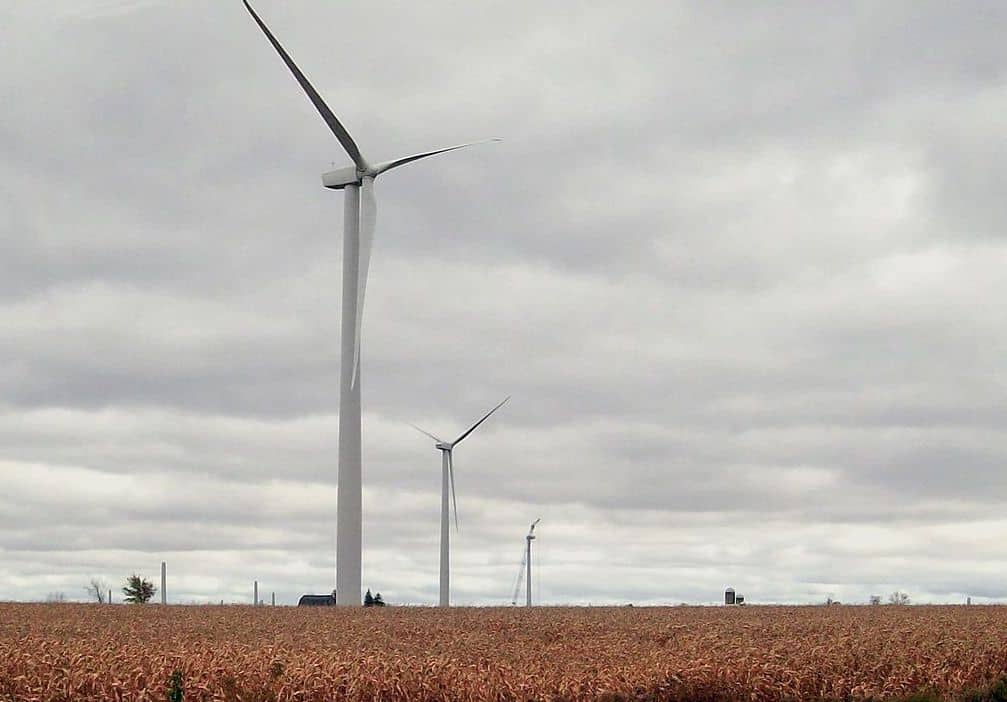Michigan Releases Report on Renewable Energy Benefits Amidst Front Group Attacks

In November 2013, Michigan Governor Rick Snyder unveiled a new study by the Michigan Public Service Commission (MPSC) detailing how renewable energy is saving consumers money and leading to robust business investment. The new report [.PDF] states that it is feasible for Michigan to achieve a 30% renewable energy standard (RPS) by 2035. MPSC Chairman John Quackenbush said, after the release of this new report, that Michigan is “capable of reaching that goal with resources located right in the state of Michigan…” according to Michigan Live. It also goes on to report that wind energy technology improvements have resulted in a decline in wind generation prices from over $100 per MWh in 2009 to $50 to $60 per MWh today.
The MPSC’s latest report cements that the state’s clean energy laws are generating positive economic opportunities and creating jobs [.PDF] – a pattern found across the country with pro-clean energy policies like RPS. MPSC’s report on renewable energy confirms the findings from another recent report on the implementation of Michigan’s Renewable Energy Standard from February 2013. The February report stated the “cost of the renewable energy standard is substantially lower than the cost of new-coal-fired plant, but combined, at a cost of $45.98 per MWh, the two PA 295 standards cost less than any newly built generation including new natural gas combined cycle plants.” The Februay report also looked at the cost of service data for Consumers Energy and Detroit Energy, companies with a combined 8 million customers, and found that the weighted average of current overall power supply costs, including purchased power, is more than the combined cost of the renewable energy and energy efficiency standards.
Furthermore, the independent grid operator for all or part of 13 Mid-Atlantic and Great Lakes states, PJM, performed a separate study that found wind energy reduces electricity production costs, wholesale prices, and eliminates carbon dioxide pollution.
The newest MPSC report release came on the same day as the “State Wind Energy Forum” hosted by The Great Lakes Renewable Energy Association (GLREA) and the American Wind Energy Association (AWEA). The wind forum sought to “explore the benefits and challenges of Michigan’s current and future wind industry.” According to AWEA, the state currently has 988 MW of installed wind capacity, representing close to $2 billion in investment – and, Michigan has 39 facilities that manufacture wind energy components being used across the country.
Despite the reality of Michigan’s renewable energy boom, the Interstate Informed Citizens Coalition (IICC), an anti-clean energy group, bused people into East Lansing from hours away (and recruited anti-wind activists from out-of-state) for a rally against the wind energy industry on Monday. The IICC’s Executive Director Kevon Martis posted a blog recently on an anti-wind website saying, “Our friends in Huron County are trying to fill a bus for this event,” and “We have folks traveling from OH, IN and hopefully Ontario to help us out.” In total, Monday’s anti-wind protest in Michigan drew approximately 20 people according to Michigan Live, some apparently from out-of-state according to protest organizers.
The IICC describes itself as “dedicated to raising public awareness of the potential impacts from the construction of industrial wind turbines in our region.” The website says it is a group of “local citizens” part of a “donor-funded, grassroots organization which receives support from a variety of local residents and businesses.”
Despite this description, Martis has multiple connections to known fossil fuel-funded front groups. His group has cited the work of the Center of the American Experiment, an affiliate of the State Policy Network. Martis’ also criticized a ballot proposition that would have expanded the state’s renewable energy standard last fall in the Mackinac Center for Public Policy’s Capitol Confidential blog, on the website of fossil fuel front group-backed MasterResource.org, and on the Committee For a Constructive Tomorrow’s (CFACT)’s website. He has also attacked wind energy projects in op-eds in media outlets, most recently in the Lenawee County newspaper, The Daily Telegram. Finally, IICC Executive Director Kevon Martis was an attendee at a secret anti-wind meeting spearheaded by a fellow of the American Tradition Institute last year. The documents uncovered by Energy & Policy Institute’s Gabe Elsner showed for the first time that local anti-wind groups were coordinating and working with national fossil fuel-funded advocacy groups to wreck the wind industry.
Numerous independent reports have detailed the benefits of a clean energy economy for the state of Michigan. Regardless, anti-wind groups like IICC continue to attack clean energy using flawed data and in collaboration with fossil fuel-funded front groups. This is just the latest attempt by IICC to draw attention away from the benefits of pro-clean energy policies in an attempt to slow the clean energy industry’s rapid growth.



